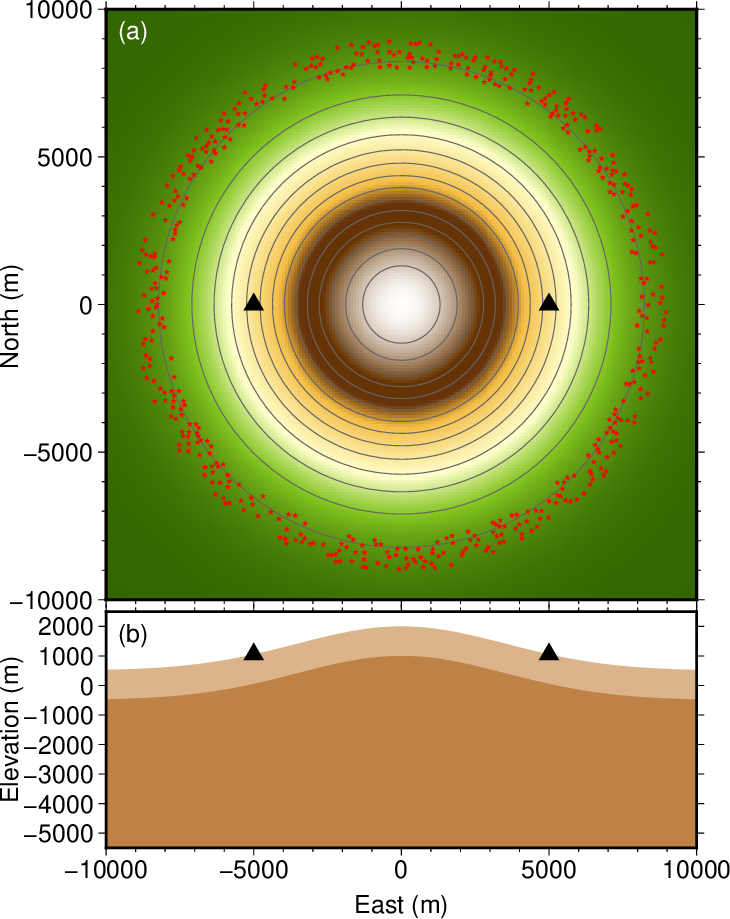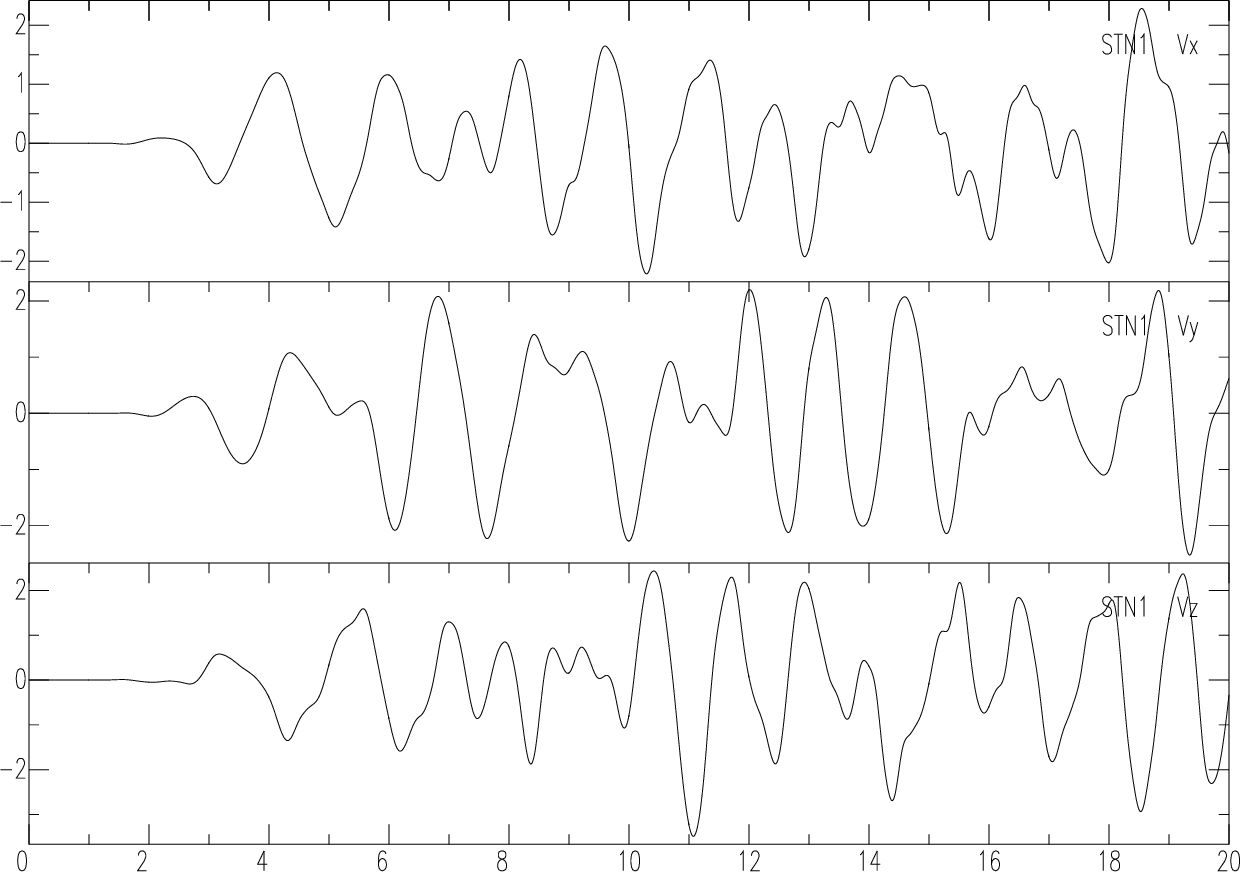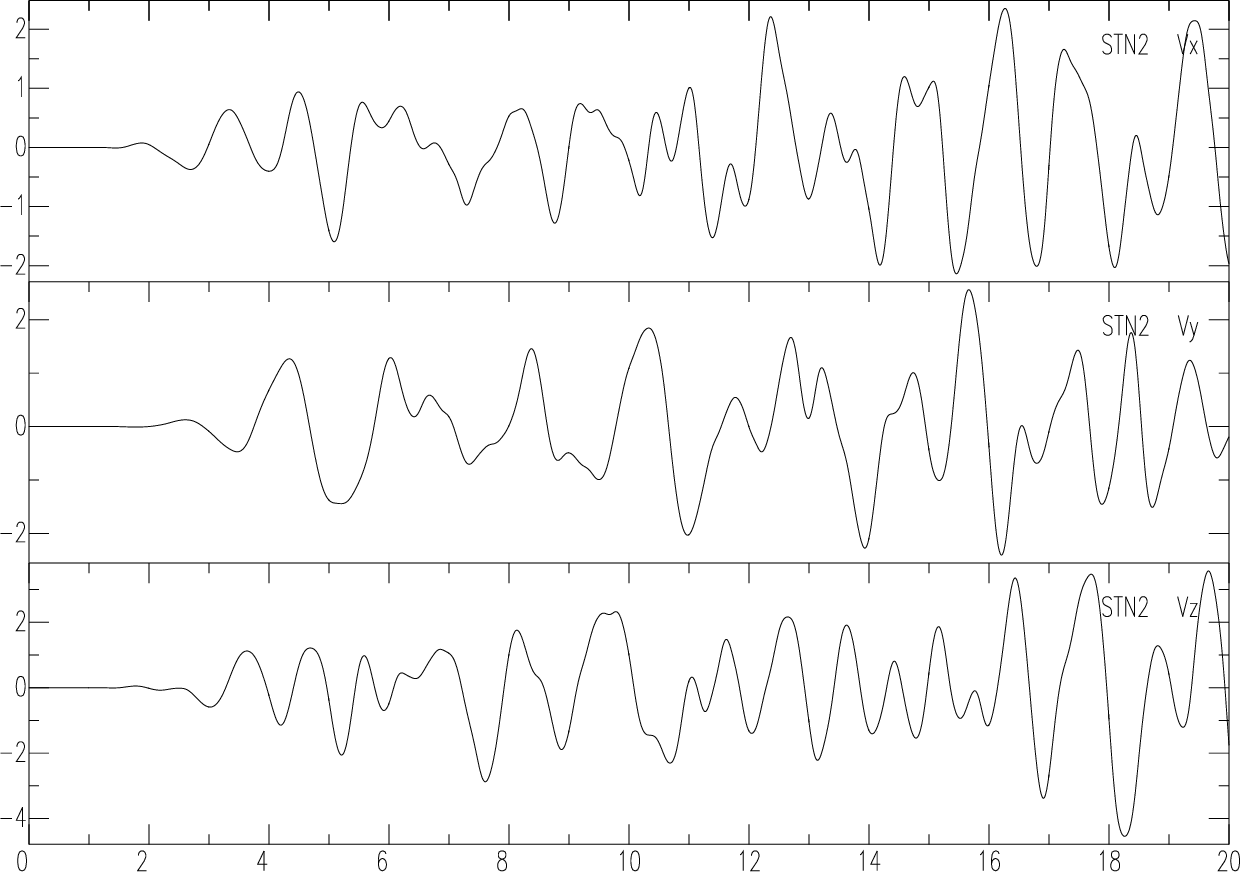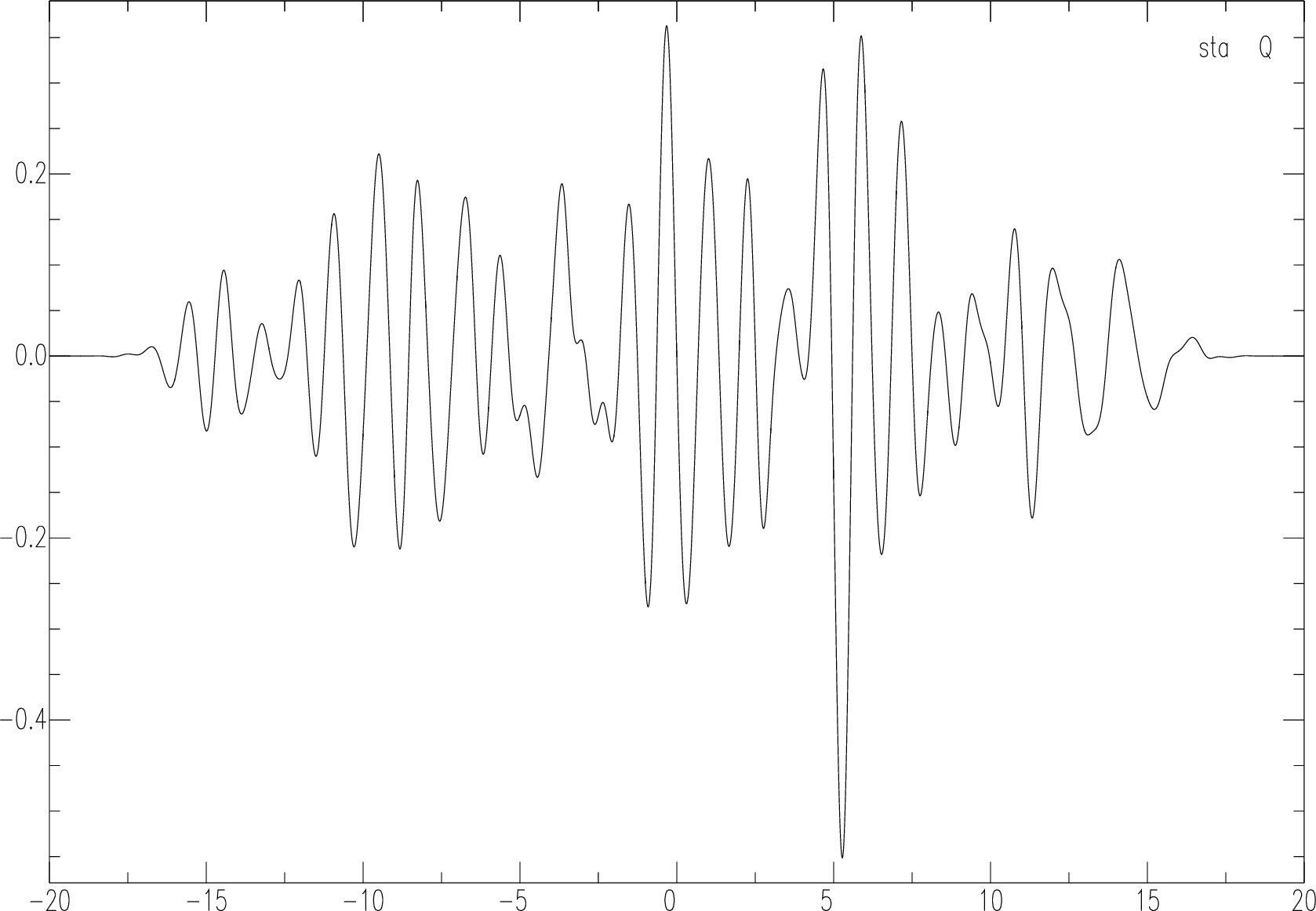gmt begin problem6 ps
gmt set FONT_ANNOT_PRIMARY 12p
#地形のプロット(水平面)
#Plotting topography in horizontal section
gmt surface topography_ex6.dat
-R-10000/10000/-10000/10000 -I100/100 -Gtopography_ex6.grd
gmt makecpt -Cdem1 -T500/2000/10 -Z -D
gmt grdimage topography_ex6.grd
-R-10000/10000/-10000/10000 -JX10/10 -Xa3 -Ya7.2
gmt grdcontour topography_ex6.grd
-R-10000/10000/-10000/10000 -JX10/10 -Xa3 -Ya7.2
-C100 -W0.4,100/100/100
-Bxa5000f1000 -Bya5000f1000 -BWsen
#表層のプロット(東西断面)
#Plotting the surface layer in EW section
awk '($2==0){ print $1,$3 }
END{ printf("10000\t-5500\n");
printf("-10000\t-5500\n"); }'
topography_ex6.dat |
gmt plot -R-10000/10000/-5500/2500 -JX10/4 -Xa3 -Ya3 -G220/180/140
#半無限媒質のプロット(東西断面)
#Plotting the half space in EW section
awk '($2==0){ print $1,$3-1000.0 }
END{ printf("10000\t-5500\n");
printf("-10000\t-5500\n"); }'
topography_ex6.dat |
gmt plot -R-10000/10000/-5500/2500 -JX10/4 -Xa3 -Ya3 -G190/130/70
-Bxa5000f1000 -Bya1000 -BWSen
#地震波動ソースのプロット
#Plotting seismic wave sources
awk '{ print $2,$3 }' source_coordinate6.dat |
gmt plot -R-10000/10000/-10000/10000 -JX10/10 -Xa3 -Ya7.2
-Sa0.1 -G255/0/0
#観測点のプロット
#Plotting stations
gmt plot -R-10000/10000/-10000/10000 -JX10/10 -Xa3 -Ya7.2
-St0.4 -G0/0/0 <<EOF
-5000 0
5000 0
EOF
station_z=`awk '($1==5000 && $2==0){ print $3 }'
topography_ex6.dat`
gmt plot -R-10000/10000/-5500/2500 -JX10/4 -Xa3 -Ya3
-St0.4 -G0/0/0 <<EOF
-5000 $station_z
5000 $station_z
EOF
#文字列のプロット
#Plotting texts
gmt text -R0/21/0/29.7 -JX21/29.7 -Xa0 -Ya0
-F+f12p+a+j <<EOF
8.0 2.2 0 CT East (m)
1.5 12.0 90 CB North (m)
1.5 5.0 90 CB Elevation (m)
3.2 6.8 0 LT (b)
EOF
gmt text -R0/21/0/29.7 -JX21/29.7 -Xa0 -Ya0
-F+f12p,,255/255/255+a+j <<EOF
3.2 17.0 0 LT (a)
EOF
gmt end
|



